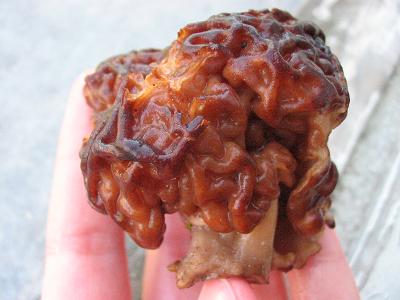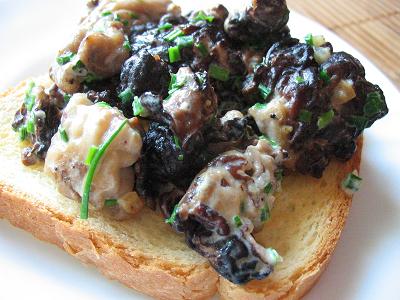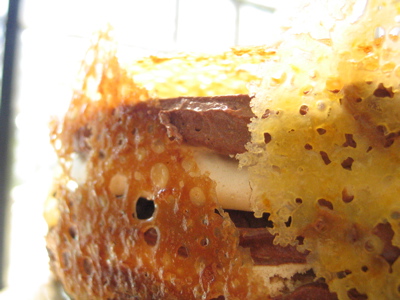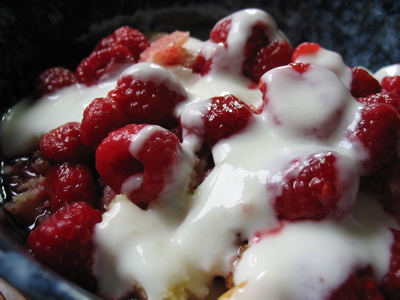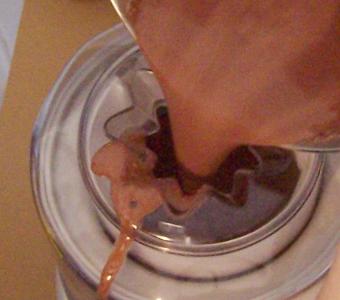
In January, there was a massive snowstorm. I was stuck at a friend’s house in New York, and we sat inside watching the snow pile up on her table. We were both reminded of The Lion, The Witch, and the Wardrobe. I have not read the book since I was young, but I remembered the witch luring Edmund into her sleight with Turkish Delight. At the time, I thought Turkish Delight had something to do with turkey (the bird), and was somewhat mystified by the attraction. Some time later, I learned that it was a sweet, jelly-like confection, flavored with citrus and rose. When I returned from New York, I knew I had to make my own.
There are a lot of recipes for Turkish delight on the Internet. None of them should be followed — they all have fatal flaws. My first attempt involved over an hour of stirring cornstarch and sugar over a hot stove; it came out lumpy. The second, using pectin, needed refridgeration, and wasn’t solid enough. The third produced caramel-flavored (that is, burned) candy; I still haven’t scraped all the black crud off the bottom of my good Le Creuset pan.
Finally, I discovered the recipe this is based on, and reduced it to its bare essentials. Unfortunately, it uses gelatine, so it is not vegetarian. But it’s quite easy to make, and delicious.
Ingredients:
- 3/4 c water
- 3 c sugar
- 3 tbsp (4 packets) gelatine
- 1/2 c water
- 2/3 cup cornstarch
- 1/2 c water
- 1 tbsp orange extract
- 1 tbsp rosewater
- few drops food coloring
- (or whatever other flavors you think would be tasty)
1 cup confectioners sugar
Find a straight-sided baking pan with surface area no more than 50 square inches. Line the pan with parchment paper on the bottom and the sides.
Stir the gelatine into 1/2 c water. Whisk the cornstarch into as little water as you can get away with, but make sure there are no lumps.
Stir the water and sugar in a heavy pan over high heat. When they’re combined, wash down the sides of the pan with a wet pastry brush. You don’t want the leftover sugar crystals to cause the rest of the sugar to crystalize. Cook the mixture until it reaches 220 F.
Add the gelatine and the cornstarch to the sugar. Keep the heat on. Stir. The gelatine will melt, and the mixture will come to a boil. Add the flavorings and coloring, and boil for about five minutes, stirring constantly. Pour into the prepared pan. Unlike many confections, you can scrap the mixture from the sides of the pan.
Allow the Turkish Delight to set overnight. Then cut into cubes and roll in confectioner’s sugar. If you used too much water, or didn’t cook it for long enough, the candy might weep a little over time. Before serving, just re-roll in confectioner’s sugar.

